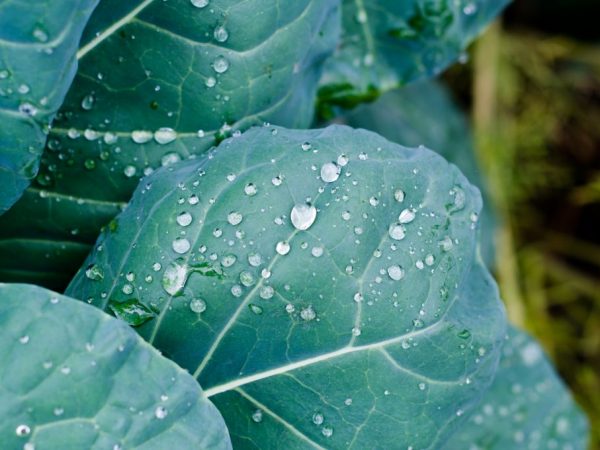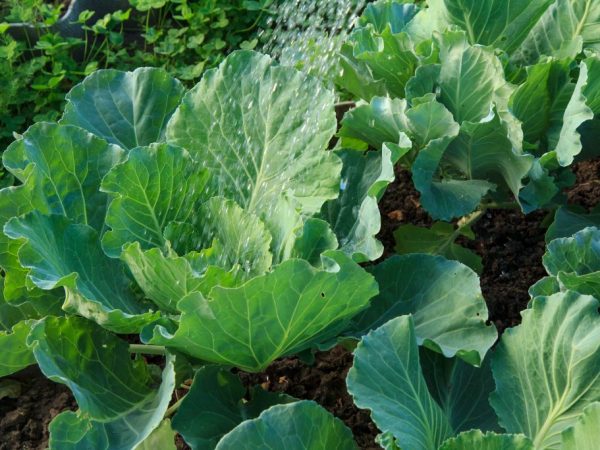Watering cabbage with ammonia
Ammonium is a drug with a very characteristic odor. For medicinal purposes, it is used to induce vomiting, withdrawal from fainting, and also for neuralgia. The cabbage is also poured with ammonia.

Watering cabbage with ammonia
general characteristics
Ammonia (chemical formula NH3) is a colorless gas that, when combined with water, forms a new substance known as ammonia (NH4OH). It is he who is a universal fertilizer that is suitable for spraying most garden and horticultural crops. The drug can be purchased at pharmacies and shops that specialize in gardening tools. Many vegetable growers are puzzled by the question of whether it is necessary to process cabbage with ammonia?
Professionals argue that there is a benefit in this. Ammonia for cabbage is an excellent development aid. Ammonia protects against pests and helps restore previously fertile soils.
Pest control
Watering cabbage with ammonia helps to get rid of such pests as:
- aphid;
- secretive proboscis;
- ants;
- bear;
- white woman;
- slugs;
- midges.
The volatile compounds contained in the preparation dissipate rather quickly. It is this smell that guarantees complete elimination of insects.
Ammonium as fertilizer
Nitrogen is an essential component for plant growth. It is part of chlorophyll, lipoids and plant organelles.
The assimilation of nitrogen by plants occurs exclusively through various chemical compounds from the soil. Therefore, the assimilation process is quite complicated. Plants may experience some developmental problems: the formation of ovaries slows down, the leaves lose color and become fragile. As soon as these problems appear, you need to treat young cabbage with ammonia.
It is interesting that nitrogen is absorbed much easier and faster in the composition of ammonia than in standard organic complex fertilizers. And most importantly, the price of a medicine is much lower than garden dressing.
How to properly prepare nitrogen fertilizer

Follow the rules
The processing of cabbage with ammonia has several rules that should be carried out. Vegetable crops do not respond well to this chemical compound. The indicator of the need for it is relatively small. Therefore, the application of top dressing should be done with the utmost care in the indicated proportions.
An excess of watering the soil with ammonia is dangerous because harmful nitrates will accumulate in the edible parts of the vegetable. Excessive irrigation is fraught with an overabundance of green mass and burns on the leaves.
In order to properly and harmlessly process salad dressing with ammonia, it is necessary to adhere to the following ratios:
- For fertilizing the soil. The procedure is carried out only if an acute nitrogen deficiency was previously noted. To prepare the soil for planting a vegetable crop, it is thoroughly watered with fertilizer. The procedure is performed 12-14 days before the start of disembarkation.Calculation of proportions: 50 ml. 10 liters of water.
- To process seedlings before planting, you need to prepare 10 liters of water and dilute 10 ml of a medicine in them. The well is poured with this solution (for each 0.5 l.). Such processing will protect the vegetable from the attacks of harmful insects. For seedlings, it is completely harmless, rather useful, as it will become a good source of minerals.
- Insecticidal solution. To prepare it, you will need water, ammonia, laundry soap. Proportion: 10 liters. water is taken 50 ml of the drug and 40-50 gr. soap (household). The last component can be pre-crushed (grated) and must be poured with warm water to dissolve. For greater convenience of preparation, soap is replaced with a similar product, such as: baby shampoo or dishwashing liquid. In order for the pests to be completely destroyed, irrigation is carried out twice with a break of 7-10 days.
- Spraying young cabbage with ammonia from pests for preventive purposes. To do this, you need to prepare a solution that contains the same components as in the insecticidal one. But there will be a slightly different proportion. 10 liters. water needs 25 ml of ammonia and 40-50 gr. detergent. Processing is carried out during the growing season every 7 days. The plant will be protected from midges, slugs, caterpillars and aphids.
- Root top dressing. Cabbage can be watered with ammonia in the following proportion: 6 tbsp. l. ammonia, diluted in 10 liters. water. The root area is poured with this solution, 500 ml goes for each bush. Before irrigation, the plant is thoroughly watered with water. The procedure is repeated no more often than 1 r. in 7 days.
How to spray a plant
Spraying with ammonia is an effective and fast way of processing. It consists of a few simple steps:
- A prophylactic or insecticidal solution is mixed in a separate container.
- Once it is uniform, it is poured into a sprayer.
- Processing must be thorough and uniform. During irrigation, care must be taken to cover the lower parts of the vegetable. The white woman most often lays eggs on the back of the leaf.
Safety precautions when working with ammonia
It is extremely toxic and can harm the body. Therefore, when working with a substance, due attention must be paid to the rules of individual safety:
- prepare a respirator (gauze bandage) to protect the upper respiratory tract;
- wear clothes that cover your hands as much as possible and always gloves;
- the solution is best diluted in the open air, in extreme cases, in a well-ventilated area;
- the drug must not be mixed with chlorine-containing agents;
- ammonia can provoke a sharp increase in pressure, so people with hypertension are not recommended to prepare a solution;
- it is necessary to store the drug out of the reach of children and pets, since when ammonia is inhaled, reflex respiratory arrest may occur.
Conclusion
Ammonia is a versatile remedy that at the same time plays the role of protection from pests and feeding. But during the introduction of this drug, it must be remembered that low-concentrated solutions should be used for treatment and prevention. Otherwise, the grower will lose a significant part of the crop.


